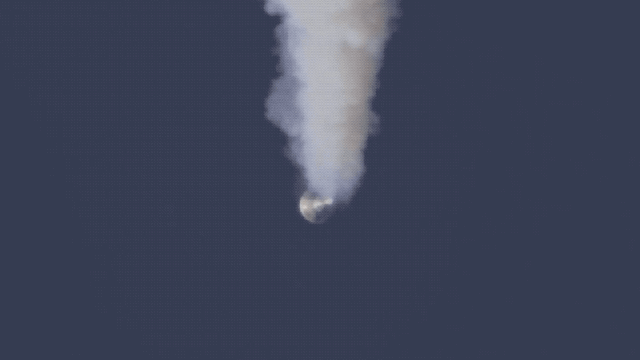NASA reached an important stepping stone to a crewed mission to the Moon yesterday night, with a successful demonstration of the Orion spacecraft’s launch abort system.
Rocket failures are rare, but they do happen. In October 2018, for example, a Soyuz rocket carrying Russian cosmonaut Alexey Ovchinin and NASA astronaut Nick Hague experienced a booster failure about two minutes into launch, triggering an abort sequence that saved their lives.
The frightening incident, only the second of its kind in 34 years, highlighted the importance of effective escape mechanisms as part of any crewed launch.
To that end, NASA just conducted a test of its Orion Multi-Purpose Crew Vehicle launch abort system (LAS).
The test, called Ascent Abort-2, involved the launch of an uncrewed Orion spacecraft followed by an abort sequence around a minute later. During the test, the Orion capsule managed to reach a safe distance away from the careening rocket.
Yesterday’s test (video below) is in preparation for the upcoming Artemis missions, which will see U.S. astronauts return to the lunar surface by 2024. Or at least, that’s the plan. To get there, NASA will use the Space Launch System (SLS), a powerful rocket that’s still under development.
“With this exploration system designed to safely carry humans farther into space than ever before, we’ll also have an equally powerful launch abort system that will pull the crew away if there is a problem with the rocket during the early portion of ascent,” said Bill Hill, NASA’s deputy associate administrator for Exploration Systems Development, in a press release.
Orion’s launch abort system consists of two parts: a fairing assembly that protects the capsule from excessive heat, airflow, and vibrations during launch, and a launch abort tower (LAT) that’s equipped with an abort motor, an attitude (or levelling) control motor, and a jettison motor.
The test got underway at 9pm AEST at Cape Canaveral Air Force Station in Florida. NASA engineers placed a basic, stripped-down version of the Orion spacecraft atop a modified Peacekeeper missile built by Northrop Grumman and supplied by the U.S. Air Force.
They triggered the abort sequence 55 seconds into the launch, a critical moment when, at an altitude of around 10 kilometres (6 miles), the rocket reached Max Q – the stage at which it endures the highest aerodynamic stress.
In the blink of the eye, the abort motor fired, shoving the module away from the zooming rocket behind it. Free from the Peacekeeper, and following an attitude adjustment, the tower-like abort structure fired its jettison motor, releasing the module for its descent toward the Atlantic Ocean.
As a cost-cutting measure, and to push ahead with its test schedule, NASA did not deploy any parachutes for the test. As NASA pointed out in its release, the parachute system is already good to go, following successful tests last year.
During a pre-test press conference on Saturday, a NASA official said the falling capsule would hit the ocean at speeds reaching 500 kilometers per hour, and they’re “not expecting it to stay intact when it hits,” as reported by SpaceNews.
That said, NASA expects to retrieve 12 data recorders ejected by the capsule during its descent, the data from which “will provide insight into the abort system’s performance,” according to NASA.
Given ongoing delays and frustrating setbacks, yesterday’s test marked an important victory for NASA.
“Launching into space is one of the most difficult and dangerous parts of going to the Moon,” said Mark Kirasich, Orion program manager.
“This test mimicked some of the most challenging conditions Orion will ever face should an emergency develop during the ascent phase of flight. Today, the team demonstrated our abort capabilities under these demanding conditions and put us one huge step closer to the first Artemis flight carrying people to the Moon.”
NASA still needs to complete construction of the SLS rocket, followed by the Artemis 1 mission, which will involve the launch of an uncrewed Orion module, and Artemis 2, which will involve a crew.
No timelines exist yet for these launches, but yesterday’s successful test of the abort system means NASA can continue to push ahead with the program.
